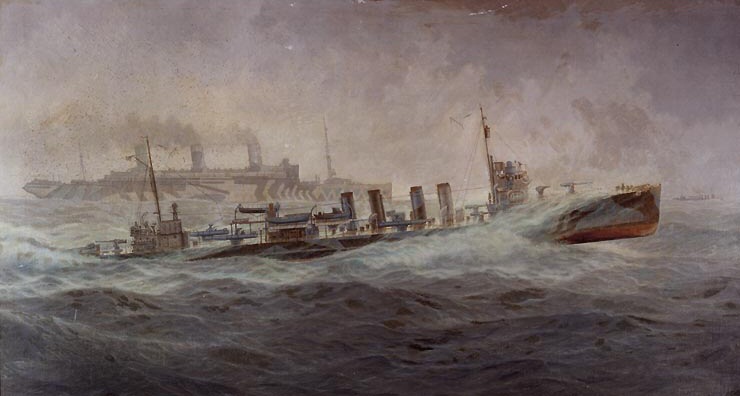From World War I and America: Told by the Americans Who Lived It
Interesting Links
“10 misconceptions about the 1918 flu, the ‘greatest pandemic in history’” (Richard Gunderman, The Conversation)
“The Ocean Liner Leviathan” (Smithsonian)
Previous Story of the Week selections
• “Alone,” Ellen N. La Motte
• “Memorial Day Address at Suresnes,” Woodrow Wilson
• “Letter from the Dust Bowl,” Caroline Henderson
• “On Some Mental Effects of the Earthquake,” William James
Buy the book
 World War I and America: Told By the Americans Who Lived It
World War I and America: Told By the Americans Who Lived It
127 selections by nearly ninety soldiers, airmen, nurses, diplomats, statesmen, political activists, journalists, and others • 987 pages
“10 misconceptions about the 1918 flu, the ‘greatest pandemic in history’” (Richard Gunderman, The Conversation)
“The Ocean Liner Leviathan” (Smithsonian)
Previous Story of the Week selections
• “Alone,” Ellen N. La Motte
• “Memorial Day Address at Suresnes,” Woodrow Wilson
• “Letter from the Dust Bowl,” Caroline Henderson
• “On Some Mental Effects of the Earthquake,” William James
Buy the book
 World War I and America: Told By the Americans Who Lived It
World War I and America: Told By the Americans Who Lived It127 selections by nearly ninety soldiers, airmen, nurses, diplomats, statesmen, political activists, journalists, and others • 987 pages
 |
| A Fast Convoy, oil on canvas by American naval artist Burnell Poole (1884–1933), one of a series of WWI scenes painted by Poole for the Navy. The USS Leviathan is escorted by USS Allen; both ships are painted in the dazzle camouflage used by the British and American navies. "No series of paintings would be complete without showing a destroyer acting as escort for a fast troop transport,” Poole wrote. This painting depicts both ships traveling “on a typical dull day in the North Atlantic in rough weather." Image courtesy of Naval Historical Foundation via WikiCommons. |
The following introduction is adapted from headnotes by A. Scott Berg in the Library of America anthology World War I and America.In March 1918 a virulent strain of the influenza virus appeared at Camp Funston, an army training facility in northeastern Kansas. The virus spread across the United States and into Europe and Asia over the next six months. A much deadlier wave of the disease began to ravage the United States that fall. The influenza pandemic killed between thirty and fifty million people worldwide, including 675,000 Americans. Even though medical authorities realized that packed troopships cultured an environment that spread the disease, the constant requirement to deliver more men to France during the fall offensive outweighed concerns about infection.
On September 29, 1918, the troopship Leviathan (formerly the German ocean liner Vaterland) began its crossing of the Atlantic. Lieutenant Commander Henry A. May, a senior medical officer assigned to the ship recorded the progress of the disease as it spread among the passengers and crew. His report was included in the 1919 publication History of the U.S.S. Leviathan.
Of the more than 9,000 troops on board, 2,000 became ill and 91 died — by far the worst outbreak of influenza on any transport during the war. All told, an estimated 46,000 members of the U.S. armed forces died of influenza in 1918–19.
Notes: Epistaxis is the medical term for bleeding from the nose. E.R.S. 2 is a ship designation for E Room Section 2; CCS, for Chief Commissary Steward, SC-2, Ship’s Cook 2nd Class.
* * *
COURSE OF THE EPIDEMICThis was influenced materially by these main factors:
First, the widespread infection of several organizations before they embarked, and their assignment to many different parts of the ship. . . . If you don't see the full selection below, click here (PDF) or click here (Google Docs) to read it—free!
This selection may be photocopied and distributed for classroom or educational use.